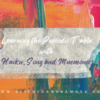It’s Cheese all the way….Cheese Science, Story and Snooping

Cheese is a common food and have found its way into our kitchen at breakfast as cheese slice, cheese omelets; during lunch and dinner as salad ingredient, in pasta, pizza, burger, dosa and more and even in delicious cheese cakes, biscuits,… list is endless.
But did you know that there are 2000 varieties of cheese, Are you aware of the fact that some banks take cheese as collateral against loans or Have of heard of cheese made of Breast milk and Moose milk, Do you know how Swiss cheese gets holes or why we pair wine with cheese….
A lot of cheese facts and Cheese science….
Cheese is milk’s leap toward immortality – Clifton Fadiman
Cheese facts:

Cheese can be produced using a variety of milk including cow, buffalo, goat, horse, camel and even Breast milk
- Mozzarella is the most consumed and most favorite around the globe
- Pizza Hut is the largest cheese-using fast food giant
- Cheese can be produced using a variety of milk including cow, buffalo, goat, horse, camel and even Breast milk.
- Since 1953, the regional bank of Italy, Credito Emiliano or Credem has accepted giant wheels of Parmigiano-Reggiano cheeseas collateral for small-business loans. Credem stores ages the wheels in climate-controlled vaults for the duration of the loan.
- A person who loves cheese or a cheese lover is called ‘turophile’
- People of Greece are the largest consumers of cheese worldwide. An average person from Greece consumes around 27.3 kg of cheese every year
- The nations that lead in cheese consumption are: Greece, France and Iceland
- Some varieties of cheese, blue cheese, gorgonzola, and brie are exposed to mold which helps them age properly
- The hardness of cheese depends on how long it has been aged
- A farm in Bjurholm, Sweden actually makes moose cheese. The moose cheese sells for roughly US$1000 per kilogram.
Cheese Science

Mozzarella is the most consumed and most favorite around the globe
Cheese making is essentially a method for preserving the nutritive value of milk through fermentation, by removing moisture and adding salt. Cheeses are biologically and biochemically dynamic and hence are unstable. Cheese is often said to be “alive”. A wide range of scientific disciplines are applied to cheese: biochemistry, microbiology, enzymology, molecular genetics, flavor chemistry and rheology. The many varieties of cheese, approx 2000 varieties, may be classified into a few families depending on the way in which the milk is coagulated. The majority of cheeses are coagulated by rennet, where the milk is converted to a gel by the action of an enzyme. For making the second variety of cheese, milk is coagulated by acidification. Squeezing out water or liquid whey is the key step in cheese making and it depends on the type of cheese. For example, for making cheddar cheese moisture content must be reduced to 37 percent. Salt is added during the manufacture of all cheeses as a preservative and flavoring agent. Most cheese varieties are salted by immersing the cheese in brine after moulding.
<
History of Cheese:
The making of cheese dates back to more than 6,000 years. Travelers from Asia brought the art of cheese making to Europe. Cheese making flourished in Europe and became an established food. In 1851 Jesse Williams built the first cheese factory in the United States.
According to an ancient legend, it was made accidentally by an Arabian merchant who put his supply of milk into a pouch made from a sheep’s stomach, as he set out on a day’s journey across the desert. The rennet in the lining of the pouch, combined with the heat of the sun, caused the milk to separate into curd and whey. That night he found that the whey satisfied his thirst, and the cheese (curd) had a delightful flavor which satisfied his hunger.
Cheese made from Breast milk:
Breast milk cannot be made into cheese because it contains too little protein and only some of the protein is casein, but then a chef at New York succeeded in converting breast milk from his wife to cheese. The same has been reported in Guardian. The flavor of cheese was very much dependent on type of food his wife consumed.
My Spouse’s Mommy Milk Cheese Making Experiment (basic recipe using 8 cups of any milk – yields about ½ pound cheese)
2 cups mother’s milk (just about any animal milk will work)
1½-teaspoon yogurt (must be active cultured yogurt)
1/8-tablet rennet (buy from supermarket, usually located in pudding section)
1 teaspoon sea salt such as Baleine…..more
What is dead cheese ?
Cheese is dead means cheese is pasteurized. Pasteurization not only kills off pathogens, but also the naturally occurring bacteria that contribute to flavor and might convey health benefits. So there won’t be any ‘living’ organism left in it.
Where do the holes in Swiss cheese come from?
Emmentaler cheese, referred to as Swiss cheese in the United States, is best known for its holey appearance . The holes in Swiss-type cheeses are created when Propionibacterium freudenreichii subspecies shermanii metabolizes lactic and propionic acid. 3 lactic acid molecules form 1 acetic acid molecule, 2 propionic acid molecules, 1 carbon dioxide molecule, and 1 water molecule. Extra oxygen and hydrogen atoms are also produced, and these go toward an enzyme that transports energy within the bacterial cells. The cheese is made with a relatively low NaCl level, which allows the bacteria to survive. The CO2 gas accumulates at the weaker spots in the cheese matrix, forming the bubbles that we call “holes” or “eyes.”
What is Vegan cheese?
Vegan cheese is entirely plant-based and it involves consolidating the protein mass from various plant sources, eg cashew cheese, almond cheese with lactic bacteria that may also be added in for acidity. Oils, emulsifiers, and thickeners are also often used to produce firmer types of vegan cheeses.
What’s the difference between cheese and yogurt?
Yogurt is made from milk fermentation. On the other hand cheese is made from acidification. Unlike cheese, milk for yogurt is initially heated to 185 degrees for 30 minutes or 200 degrees for 10 minutes, which kills off any pathogens and causes the milk protein to “denature” or fall apart. By doing this, the milk thickens (yogurt) instead of forming curds (cheese). The starter is added after the milk is homogenized and cooled to 110 degrees, and the temperature is held there for 2-3 hours. The result is a gel with a pH of 4.5. To compare this to cheese, Milk has a pH around 6.6, meaning it is slightly acidic, and once that pH is decreased by around 0.2-0.3 units is when rennet is added to coagulate or set the milk into curd. With yogurt, effort isn’t made to remove whey — except for in Greek yogurt
Why we pair Wine with Cheese ?
The natural acidity of the wine pairs brilliantly with the fatty taste of the cheese, creating a balanced favor. The tannins in the wine cut through the fat of the cheese, giving us a delightful combination of flavours. Cheese is fairly high in fat, and can coat palate. One need a rich, bold, high tannin wine to serve with fatty cheeses.
Cheese all around:
Many cheeses which are well-known today were made during Middle Ages. For example, Cheddar in 1500, Parmigiano-Reggiano in 1597, Gouda in 1697 and Camembert in 1791. Goat’s milk has less fat and tastes lighter. Goat’s milk cheese tends to have a fresh, tangy taste. Sheep’s milk contains the most butterfat and so sheep’s milk cheese will taste much richer.
Some common CHEESE:
Feta is a pickled curd cheese that has a salty and tangy taste enhanced by the brine solution. The texture depends on the age which can be extremely creamy, or crumbly dry. It is made with at least 70% sheep’s milk. The cheese is protected by EU legislations and only those cheeses manufactured in Macedonia, Thrace, Thessaly, Central Mainland Greece, the Peloponnese and Lesvos can be called ‘feta’.
Mozzarella cheese is curd cheese from Italy. Traditional Mozzarella cheese is made from milk of water buffalos herded in very few countries such as Italy and Bulgaria. The curds are heated in warm water and stretched by hand before being rolled into moist balls.
Gouda is a Dutch cheese named after the city of Gouda in the Netherlands. It is one of the most popular cheeses in the world, accounting for 50 to 60 percent of the world’s cheese consumption. Gouda is typically made from pasteurised cow’s milk.
Cheddar cheese, the most widely purchased and eaten cheese in the world is always made from cow’s milk. It is a hard and natural cheese that has a slightly crumbly texture if properly cured and if it is too young, the texture is smooth. The color ranges from ivory to straw to deep yellow in color.
Cheeses mocking Parmigiano Reggiano are called as Parmesan. True Parmesan cheese has a hard, gritty texture and is fruity and nutty in taste.
You can read on all types of cheese here……













I love cheese but I didn’t know more than half the details you have mentioned. Definitely super informative and also I kind of feel like having cheese now.
Thank you Sangeeta for stopping by
I love cheese and there’s so much I didn’t know about them.. A very informative and interesting post
such a cheesy post! lol! well, this is good to know information! never knew beyond regular cheese and mozzarella cheese 😛
Being a turophile, I absolutely loved reading this blog
You love cheese…
What a past and present story about cheese. Its fabulous infomation indeed. We all eat cheese with so much passion and for taste but never know so much about it. I wonder how you gether so much vast knowledge about this little thing. But superb post and thanks for sharing
Thank you Minakshi
I love cheese. Everything here is so damn tempting.
OMG I am such a cheese lover… had no idea about all this information!! Amazing!!
I love the science touc to he post you gave. I knew about Cheese but this post is informative. Loved reading it. And I am a fan of Cheese.
Wow simple looking yummylicious cheese can be so much more than just fats. In my entire life so far I have never read so much about cheese. I am sure we all just love to eat it but not know much about it. Your posts is very informative and amazing.
Thank you Rakhi
Such a cheesy post ..I mean loved the way you explained each and everything
I love cheese.. especially mozzarella.. it’s great to know facts about my fav food item in the world ❤
all I know about cheese is Amul Goat chesse and Mozzarella chesse, Lovely share. Want to know more about my fav food item.
It was great to know so many not known facts about cheese
I love cheese cakes. from now on i would be really amused by every piece of cheese cake i shall eat. Thanks for such an informative post
such a cheesy post l love cheese and cheesy products. Got some new information.
Your post on cheese has made me want it now. Now i m going to the market and get my fav ones.